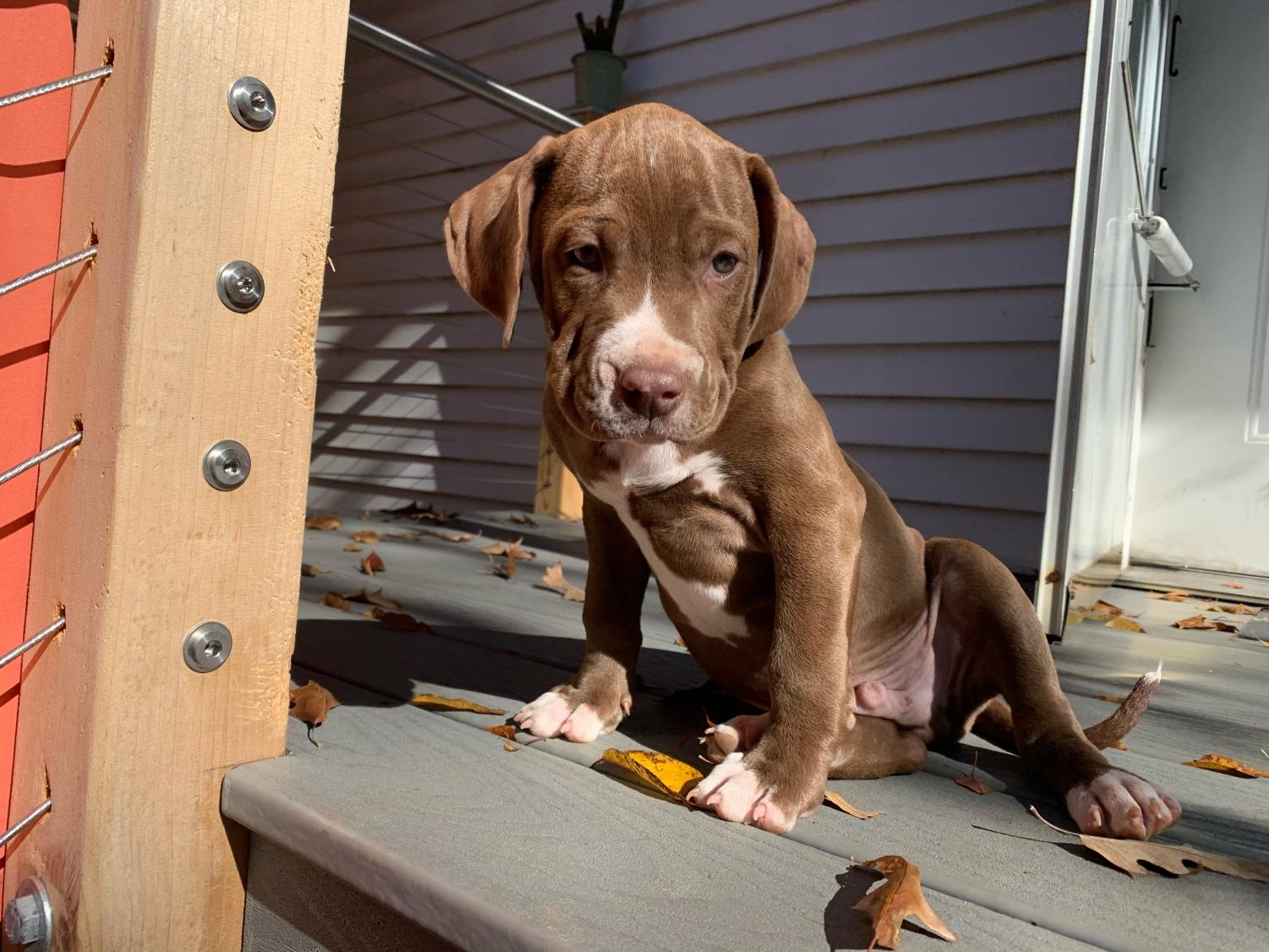Every year, an estimated 6.5 million animals enter animal shelters nationwide. With over 3,500 kill shelters across the United States, the devastating fate of around 2.7 million animals is sealed the second they step foot into those buildings. Though these numbers may be overwhelming, with the help of non-profit rescue organizations, countless dogs and cats are given a second chance at life. These organizations rely on keeping animals in foster homes until they are adopted. As shelters across the country run out of space, they often reach out to foster-based rescue organizations with pleas to help these vulnerable animals. Without foster homes, these organizations are unable to help and these animals have no place to go.
Fostering helps reduce overcrowding in shelters while opening up space for other animals to be saved. Foster families allow these animals time to prepare for adoption by welcoming them into loving, patient homes while they work to overcome any potential fears or medical issues.
Studies have shown that having an animal companion, even temporarily, can be a form of therapy. Unfortunately, due to many different circumstances, it is not an option for some people to adopt an animal of their own. In this case, fostering may be a good compromise. If you work long hours, rescues can place a senior or low energy dog or cat in your care. If you can only take care of a specific breed of animal due to allergies or medical conditions, rescue organizations can most likely locate and save that breed of dog. No matter the circumstance, rescues can work with you to find the right temporary companion. By opening your home to an animal in need you are experiencing new things, having fun and saving a life all at once.
Being a foster is not always easy. It is important to know that these animals can come from horrific backgrounds with a number of medical and behavioral issues. Fortunately, rescues do their best to match the animal with the correct foster, so it is up to you whether you think you are ready to take on a more challenging case.
In the past we have had quite a few terrified and extremely shy animals come into our home. These animals essentially shut down while in the shelter environment and, depending on the case, it can take days, weeks or even months for this animal to come out of their shell and show their true personality. These animals are often overlooked in shelters due to their timid nature, but once they experience a loving, caring home, they often are diamonds in the rough.
One of my most memorable fosters was a young, pregnant pit bull named Ginger. She was found alone on the side of a busy road in Georgia, extremely emaciated and covered in scars. Though we never knew much about her background, it was clear that it was one filled with great trauma. When she first arrived here in Virginia, she was absolutely terrified of men and other dogs. For the first few days she cowered in her dog bed, only occasionally getting up to drink water and eat food. She was so nervous that she would tremble in fear as soon as we approached her. Though it took time, we never gave up, and after a few days of building our trust and relationship, she finally let us pet her. As we stroked her brittled and unkempt coat, we could see the relief in her eyes; she knew she was finally safe.
After only about a week with us, Ginger delivered five healthy puppies and one tiny runt. Sadly, as an instinct due to her time as a stray, Ginger rejected her sixth, tiny puppy. We cannot blame Ginger for this; she was doing what she thought was best as she needed to focus on her five healthy puppies. Though unlike Ginger, we did not give up on her puppy, who we later named Basil. We kept him upstairs in a homemade incubator and bottle fed him every three hours for two weeks until he finally caught up to the weight of the rest of his litter. At that point, Ginger accepted him and the family was finally reunited.
Unfortunately, life happens and tragedy struck. With newborn puppies, the first two weeks of life are crucial. Their immune systems are so weak that the smallest germ or illness can have lethal consequences. Because of this, we kept outside visitors to a minimum as were so worried about exposing Ginger and her puppies. As the puppies reached the three week mark, we thought we had turned the corner. Everyone was gaining weight and their personalities were emerging as their ears and eyes began opening.
Even with our best efforts we couldn’t prevent the inevitable. Sadly, just as things were looking up, the puppies began declining rapidly. After countless hours racing between emergency vets trying anything and everything we could to find answers and help these puppies, we lost three of Ginger’s babies. The vet said we did everything by the book and there was likely nothing we could have done differently. The truth of the matter is that before coming to us, Ginger lived in deplorable conditions where she could have been exposed to any number of germs that caused the death of her puppies.
Hearing that it wasn’t our fault did not take the feeling of guiltiness and grief away. We were heartbroken, not only that these three loving puppies had their futures ripped away from them in a matter of hours due to a mystery illness, but that Ginger was left wondering where her babies went. Years later, we still wonder if we could have done something more to save these three puppies.
Though Ginger and the remaining members of her litter had a happy ending as they all were welcomed into wonderful homes, the tragedy of losing her three puppies early on could have been prevented. In addition to the devastation that occurred, Ginger’s countless hours of labor and weeks of recovery after giving birth could have been prevented if she had been spayed.
Spaying and neutering animals is extremely important. Not only does altering animals reduce the number of strays, it can also increase their lifespan, protect against illness and curb unwanted behaviors. Though cost may be a concern for some, hundreds of rescues across the nation offer low cost spay and neuters in an attempt to reduce the population of unwanted animals.
In addition to spay/neuter awareness, many rescues have promoted the phrase ‘adopt don’t shop’ which suggest that those looking for a new companion, should check their local shelters and consider adoption before resorting to buying from a breeder. While there are certified breeders who provide their animals with a comforting and well-structured environment, there are also people referred to as ‘backyard breeders’ who breed their animals over and over again in terrible conditions. Backyard breeders and puppy mills account for a significant percentage of shelter animals as well as animal cruelty cases.
Though humane, non lethal animal shelters provide animals with food and protection from environmental factors, they are no place for puppies. Shelters are breeding grounds for germs and disease. The second an animal contracts any sort of virus, it spreads like wildfire throughout the entire shelter. Unlike adult dogs, puppies do not have a strong immune system and most are unable to fight off these potentially deadly diseases. In the rescue world, we refer to one of these viruses as the P word; Parvo. Parvo is a highly contagious, gastrointestinal illness with a mortality rate of 91% when left untreated.
Thankfully in our six years of fostering, we have only encountered one case of parvo. It was brutal. After driving to Knoxville, Tennessee to pick up the load of animals being rescued, we brought home two tiny, six week old Husky mixes. The first week with them was filled with joy, cuddling and endless play time. But that eighth day is when things went downhill. What started as the puppies becoming lethargic and uninterested in food, turned into a fight for their lives. Once diagnosed with Parvo, our vet began administering hourly fluids and medications to help the puppies tiny, weak bodies fight off the awful virus. After a few days of no food and constant vomiting our puppies resembled skeletons. They had no energy left and we were worried they could not fight any longer. We prepared ourselves for the worst as our vet told us “It is up to them to decide whether or not they want to continue fighting.” Sure enough, our puppies were not ready to give up. After 6 days of constant fluids, medication and disinterest in food, both puppies began to perk up. The relief felt as they took their first bites of food was an unexplainable feeling. They had finally turned the corner and were ready to get back to their normal, energetic, sassy selves.
Both puppies had adopters anxiously waiting to welcome them into their families. We spent the next couple of weeks closely monitoring the puppies for any sign of decline as we worked to fatten them up. Finally after a month and a half in our care, the puppies were ready to head to their forever homes. As a foster, you constantly remind yourself not to get attached but this was one of our toughest and most bittersweet goodbyes. Though we receive monthly updates and know our puppies went to the absolute best homes, it is nearly impossible not to get attached when you spend countless hours and sleepless nights nursing these animals back to life.
Some goodbyes hurt more than others and out of the nearing 300 animals that have passed through our house, there are five to six animals that we miss everyday and at times regret not adopting them ourselves. Nevertheless, everything happens for a reason and we are glad to have been a part of their story.
“How do you let them go?” I allow myself to experience the pain of a temporary heartache so these animals never have to experience pain and suffering ever again. Though fostering has been full of ups and downs, it has taught my family invaluable lessons about love, loss, patience and acceptance.
[Local rescue organizations always welcome new fosters because the more foster homes available, the more animals they can save. If interested in becoming a foster parent for local rescues like Wolf Trap Animal Rescue, Lost Dog and Cat Rescue, Homeward Trails Animal Rescue and Lucky Dog Animal rescue, I highly recommend visiting their websites for more information. If you are unable to foster but want to help support local rescues, there are many different ways to donate and fundraise.]








































